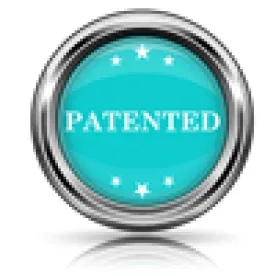Carnegie Mellon University v. Marvell Technology Group, Ltd., et al.
Addressing a panoply of damages issues, the U.S. Court of Appeals for the Federal Circuit affirmed a reasonable royalty, rejected the defendant’s laches defense and provided significant guidance on the application of the extraterritoriality bar to patent damages. Carnegie Mellon University v. Marvell Technology Group, Ltd., et al. Case No. 14-1492 (Fed. Cir., Aug. 4, 2015) (Taranto, J.).
Carnegie Mellon University (CMU) sued Marvell for infringing two patents related to hard-disk drives. A jury found for CMU on infringement and validity, awarding damages of approximately $1.17 billion in reasonable royalties based on a 50 cent per product royalty rate. The district court applied that 50 cent per product rate to all sales as of the date of judgment and awarded a 23 percent enhancement of the past damages for Marvell’s willful infringement. Marvell appealed.
The Federal Circuit affirmed the judgment of infringement and validity.
The Federal Circuit also affirmed the district court’s rejection of Marvell’s laches defense, finding that while the presumption of laches applied because CMU unreasonably delayed filing its lawsuit and Marvell suffered prejudice, on balance, the equities nevertheless favored CMU. The Court found it particularly egregious that Marvell had “copied CMU’s patents consciously and deliberately for an entire decade,” noting that its Aukerman precedent specifically instructed district courts to consider copying as one of the relevant factors in balancing the equities after the threshold requirements for laches were met.
However, the Federal Circuit reversed the enhanced damages based on willfulness. As the willfulness finding was not based on actual knowledge by Marvell, CMU was required to meet the Seagate threshold, namely showing through clear and convincing evidence that Marvell “acted despite an objectively high likelihood that its actions constituted infringement of a valid patent and this objectively defined risk was either known or so obvious that it should have been known.” The Court found that Marvell knew or should have known of the CMU patents and that Marvell did not establish a good-faith basis for believing it was not infringing. However, the Court nevertheless reversed the enhancement of damages because Marvell’s invalidity defense was objectively reasonable, negating the intent to infringe. The Court found that while the jury could properly reject Marvell’s invalidity defense, there was enough uncertainty about what was disclosed in the prior art that Marvell’s invalidity defense was not objectively unreasonable.
The Federal Circuit also explained that it was reversible error for the district court to have ruled that Marvell’s reasonableness was a factual issue to be determined by the jury. Rather, objective reasonableness is a legal matter to be determined by the Court and is reviewed de novo. The Court also held that it was immaterial whether Marvell knew of its invalidity defense at the time the alleged infringement began. The Federal Circuit also explained that Marvell’s objective reasonableness should be assessed based on all defenses presented in the proceeding and not limited to the evidence presented to the jury.
Finally, the Federal Circuit rejected Marvell’s challenges to the royalty rate, finding that CMU’s damages expert was qualified, and that a 50 cent per unit royalty rate was a reasonable result based on a hypothetical negotiation. The Court re-affirmed that central to the inquiry is a determination of what it would have been worth to Marvell to obtain a license to the patented technology taking into account the expected benefits and available alternatives. While past licensing practices of the parties and similar licenses can also provide useful evidence, the Court cautioned that “such evidentiary use must take careful account of any economically relevant differences between the circumstances of those licenses and the circumstances in the matter in litigation.” The Court rejected Marvell’s argument that a lump-sum payment would have been the result of the hypothetical negotiation, noting that there were economic justifications for a per-unit royalty as the royalty would have “allowed Marvell’s payments to vary with the sales its infringing activity produced, which are a good way of valuing what it was worth to Marvell to engage in that activity.”
Though affirming the reasonable royalty rate, the Federal Circuit vacated the damages award and ordered a partial new trial to determine whether chips that never entered the United States could nonetheless be considered sales that occurred in the United States for damages purposes. The Court explained that “[w]here a physical product is being employed to measure damages for the infringing use of patented methods, we conclude territoriality is satisfied when and only when any one of those domestic actions for that unit (e.g., sale) is proved to be present, even if others of the listed activities for that unit (e.g., making, using) take place abroad.” The Court noted that the “presumption against extraterritoriality” applies in a reasonable royalty context, and that only United States sales could be included in the damages calculation. The Court acknowledged that there was no settled definition for the location of a sale and urged the district court to consider where the contract to purchase the product was executed, the place of delivery, and the place where other substantial activities of the sales transaction occurred.
Finally, the Federal Circuit denied Marvell’s challenge to royalties assessed on products that were imported into the United States, finding no extraterritoriality bar to including those products.
Practice Note: Given the cross-border world of modern commerce, parties need to be very careful to provide evidence to support their sales location arguments so that only sales with a sufficient United States connection are included in the damages calculation.




 />i
/>i
